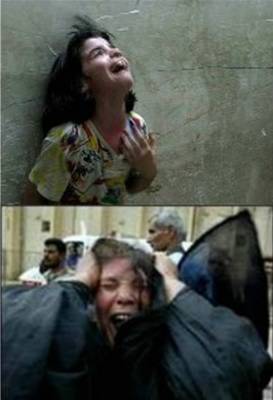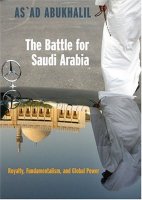"BEIT SAFAFA, Arabic for “summertime home”, was the only one of some
40 Arab villages in the district of West Jerusalem to survive the war of
1948 that created Israel; the others were more or less emptied of their
inhabitants, who mostly fled the killing and found their return barred
by the victorious Israelis. As a result, the people of Beit Safafa have
generally been loyal to the state of Israel. Many of its townsfolk
welcomed the 1967 war, when Israel captured what was left of Palestine,
because it reunited the town which for 20 years had been divided by the
armistice line running down the middle of it. When other Palestinians
rose up in protest against Israel’s occupation of the entire city, Beit
Safafa remained a picture of harmony.
No longer. To speed up their travel from dwellings in the West Bank south of Jerusalem, Israel’s settlers have persuaded the government to plough a six-lane motorway (in some places it has ten lanes) through the Arab-populated town. Once the road is complete, the settlers will be able to drive from the West Bank to central Jerusalem or Tel Aviv, Israel’s commercial capital on the coast, without having to go through a traffic light. To make way for the motorway, which will slice through a community 9,000-strong, bulldozers demolish olive groves, terraces and caves hugging Bethlehem’s foothills.
For the Palestinian townsfolk who once championed integration with their Jewish fellow citizens, the motorway is a bitter blow. Israel has already built one highway through the town, naming it after Dov Yosef, the first Israeli military governor of Jerusalem, and has also built a large Jewish settlement called Gilo and an industrial zone on the slopes above. As part of his recent election campaign, Binyamin Netanyahu, Israel’s prime minister, promised to build thousands more housing units and a string of hotels on what Arabs call Tabaliya and Jews Givat Matos, the last unsettled hilltop overlooking Beit Safafa.
“They just want us out,” says an architect, who has spent his career working with Jerusalem’s municipal authorities. The town’s muezzin calls for strikes and protests as well as prayers. Worshippers leaving the main mosque tell glum tales of confiscated land.
Before the municipality approves such big building projects in the Jewish-inhabited districts of Jerusalem, it has to submit a detailed plan, routinely holding public consultations to hear objections. But the residents of Beit Safafa awoke in November to find bulldozers digging outside their homes. Belatedly they headed to court, but the judge allowed work to continue while she pondered her ruling and then rejected the petition. Police have broken up demonstrations and handcuffed protesters for what the municipality calls vandalism.
Walls as high as first-floor windows are to be built to shield residents. The municipality says it will cover 180 metres of the road, but has rejected pleas for a tunnel. “They could never dissect a Jewish neighbourhood the same way,” says Meir Margalit, one of the few Jewish councillors to have rallied to the residents’ cause."
No longer. To speed up their travel from dwellings in the West Bank south of Jerusalem, Israel’s settlers have persuaded the government to plough a six-lane motorway (in some places it has ten lanes) through the Arab-populated town. Once the road is complete, the settlers will be able to drive from the West Bank to central Jerusalem or Tel Aviv, Israel’s commercial capital on the coast, without having to go through a traffic light. To make way for the motorway, which will slice through a community 9,000-strong, bulldozers demolish olive groves, terraces and caves hugging Bethlehem’s foothills.
For the Palestinian townsfolk who once championed integration with their Jewish fellow citizens, the motorway is a bitter blow. Israel has already built one highway through the town, naming it after Dov Yosef, the first Israeli military governor of Jerusalem, and has also built a large Jewish settlement called Gilo and an industrial zone on the slopes above. As part of his recent election campaign, Binyamin Netanyahu, Israel’s prime minister, promised to build thousands more housing units and a string of hotels on what Arabs call Tabaliya and Jews Givat Matos, the last unsettled hilltop overlooking Beit Safafa.
“They just want us out,” says an architect, who has spent his career working with Jerusalem’s municipal authorities. The town’s muezzin calls for strikes and protests as well as prayers. Worshippers leaving the main mosque tell glum tales of confiscated land.
Before the municipality approves such big building projects in the Jewish-inhabited districts of Jerusalem, it has to submit a detailed plan, routinely holding public consultations to hear objections. But the residents of Beit Safafa awoke in November to find bulldozers digging outside their homes. Belatedly they headed to court, but the judge allowed work to continue while she pondered her ruling and then rejected the petition. Police have broken up demonstrations and handcuffed protesters for what the municipality calls vandalism.
Walls as high as first-floor windows are to be built to shield residents. The municipality says it will cover 180 metres of the road, but has rejected pleas for a tunnel. “They could never dissect a Jewish neighbourhood the same way,” says Meir Margalit, one of the few Jewish councillors to have rallied to the residents’ cause."








